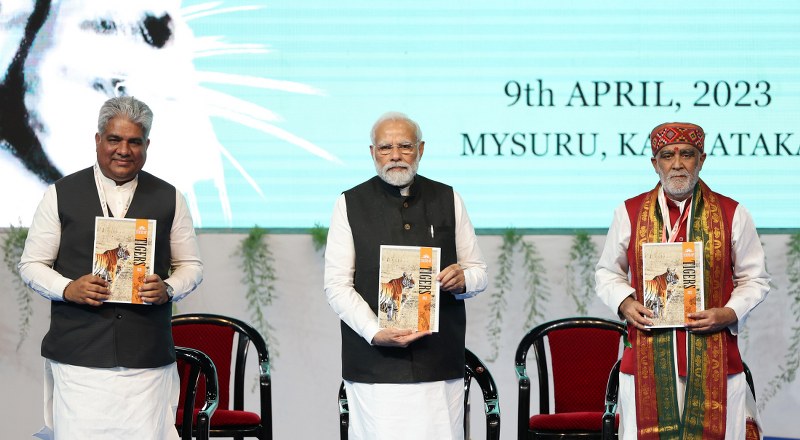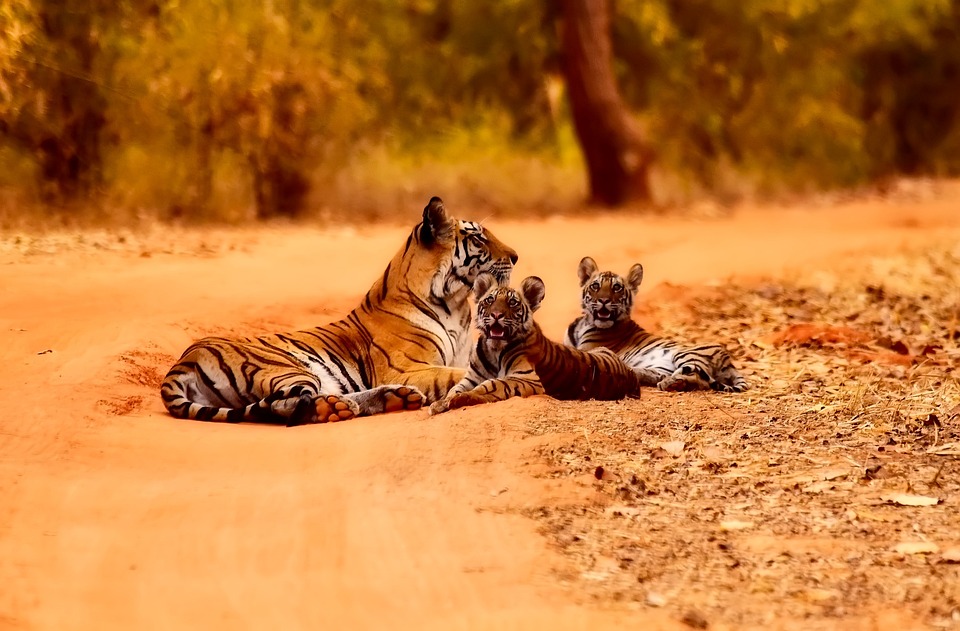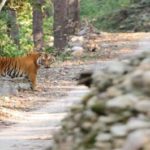
(IBNS): Prime Minister Narendra Modi on Sunday released the results of the 5th cycle of India’s Tiger Census, which showed that the population of tigers in the wild has grown to 3,167 as of 2022.
This marks an increase from the 2018 Tiger Census, which had reported the presence of 2,967 tigers in India and signifies a growth of 6.7 percent or 200 tigers over the past four years.
During the 2006 Tiger Census, the tiger population in India was recorded at 1,411. This number increased to 1,706 in the 2010 cycle and further to 2,226 in the 2014 evaluation.
[ALSO READ: Chef Ng Meng Loong’s dim sums at Four Seasons Bengaluru]
Prime Minister Modi released the figures of India’s Tiger Census during the inauguration of the International Big Cat Alliance in Mysuru, Karnataka, on Sunday.
The conference, which is being held to commemorate 50 years of Project Tiger, is the first of its kind in India and will focus on the protection and conservation of seven major big cat species, including tigers, lions, leopards, snow leopards, pumas, jaguars, and cheetahs.
Before launching the conference, the Prime Minister visited the Bandipur Tiger Reserve as well as the Theppakadu Elephant camp in the Mudumalai tiger Reserve.

“It has been 50 years of Project Tiger. The success of Project Tiger has been an achievement not only for India, but for the entire world. India has not only saved the tiger, but has given it a great ecosystem in which to flourish. It is a matter of great happiness for us that at a time when we have completed 75 years of Independence, that nearly
75 per cent of the world’s tiger population can now be found in India and tiger reserves in the country span 75,000 square kilometres. This has been possible because of everyone’s efforts,” he said, addressing the international conference.
“Why is it that while in other parts of the world, as the tiger population remains stable or declines, it is actually increasing in India? Because the connection with biodiversity and environment is woven into our traditions and our culture,” he added.
During his speech at the International Big Cat Alliance conference in Mysuru, PM Modi highlighted the long-standing connection between tigers and the people of India, dating back thousands of years, as evidenced by 10,000-year-old cave paintings in Madhya Pradesh.
He also highlighted the special bond between tribal communities in India and tigers, and how these communities revere the big cat as a symbol of power and strength.
Further, PM Modi noted that the populations of other big cats in India, including lions, leopards, elephants, and single-horned rhinos, have also increased. India has the largest number of Asiatic elephants and single-horned rhinos in the world, and is the only country where the Asiatic lion is found.
The population of Asiatic lions has increased by 28.6%, from 525 in 2015 to 675 in 2020, thanks to various conservation efforts. Meanwhile, leopards have seen a 60% increase in population over the past four years.
[ALSO READ: Virgin Atlantic announces codeshare agreement with Korean Air]
The National Mission for Clean Ganga has also helped to revive the population of some endangered aquatic species.
Prime Minister Modi attributed these successes to people’s participation in conservation and the culture of preservation.
He stressed the importance of establishing an emotional and economic bond between human communities and wildlife, saying that there is no conflict between ecology and economy and that such a bond is essential for successful conservation efforts.




